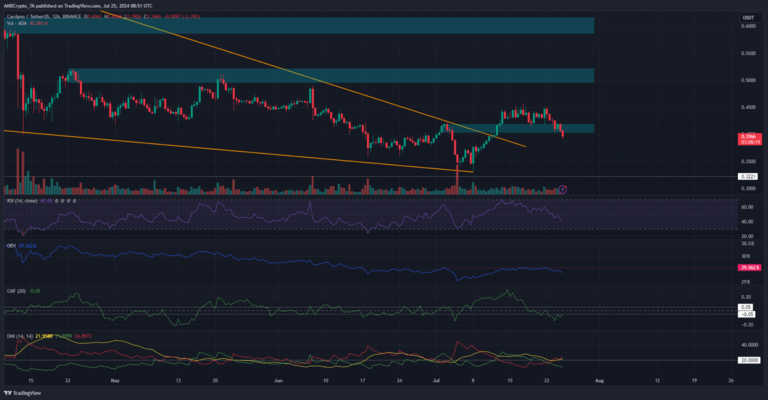
- The early Bitcoin adopter ‘allinvain’ experienced a devastating theft in June 2011 when 25,000 BTC, now worth over $1.62 billion, were stolen from his wallet due to a hacking incident involving a Trojan virus.
- This heist, one of the first major Bitcoin thefts, highlighted the significant risks and vulnerabilities in the nascent cryptocurrency world.
In the early days of Bitcoin (BTC), the crypto world was like the Wild West — uncharted, exciting, and fraught with dangers lurking around every corner. It was a time when few people understood what Bitcoin was, let alone its potential. The year was 2011, and Bitcoin was still in its infancy. Its price hovered around $10, a far cry from its meteoric rise in later years.
Back then, the idea of a digital currency free from the control of any government or financial institution was newfound, attracting those eager to explore this new frontier. Among these early adopters was a Bitcoin user known by the online pseudonym ‘allinvain.’
However, on one fateful day in June 2011, allinvain’s world was turned upside down. As he sat down to check his Bitcoin wallet, he was greeted with a shocking discovery: his stash of 25,000 bitcoins had vanished. Fast forward to today, and those same bitcoins would be worth over $1.62 billion. This incident was one of the first major Bitcoin thefts and sent shockwaves through the crypto community. For allinvain, it was a devastating blow, both financially and emotionally. The once hopeful and promising world of Bitcoin had suddenly turned into a nightmare.
Who was Allinvain?
The pseudonymous figure known as ‘allinvain’ was an early adopter of Bitcoin, drawn to the digital currency’s promise of a decentralized financial system. While his real identity remains a mystery, his journey in the Bitcoin community began like many others — with curiosity and a sense of adventure.
Allinvain discovered Bitcoin in its nascent stages around 2010 when the concept of digital currency was still obscure and largely misunderstood. Intrigued by its potential, he began mining Bitcoin, a process where powerful computers solve complex mathematical problems to validate transactions and generate new bitcoins. During these early days, mining was relatively easy, and allinvain managed to amass a large number of bitcoins through this process, generating a 50 BTC block every hour, and amassing 1,200 BTC per day.
2/ But ALLINVAIN was also a dedicated #Bitcoin miner.
— The Bitcoin Historian (@pete_rizzo_) June 16, 2024
Armed with only his laptop, he was generating a 50 BTC block every hour.
That’s 1,200 BTC per day 🤯 pic.twitter.com/WW8juRNNRp
Mining wasn’t all that allinvain did. In 2010, he started one of the first Bitcoin exchanges, Bitcoin Express, which allowed users to buy Bitcoin with PayPal. The exchange sold 1,000 BTC for $5, pricing each bitcoin at an astonishingly low $0.005. Beyond this, he was also an active and engaged member of the Bitcoin community. He frequently participated in online forums such as Bitcointalk, where early Bitcoin enthusiasts gathered to discuss the currency’s potential, share mining tips, and debate the future of decentralized finance (DeFi). His contributions extended beyond online forums—he participated in early Bitcoin transactions, helping to create a market for the digital currency and establishing its credibility and utility as a medium of exchange.
By 2011, the mining scene had dramatically changed. Mining difficulty skyrocketed, and the hash rate surged to 4 TH/s, a colossal increase from the mere 0.001% in 2010, which led to a crazy surge in Bitcoin prices. However, what happened next was truly shocking and revealed the dark side of the decentralized system that allinvain and others were hoping to propagate.
The Devastating Theft
Allinvain quickly became a Bitcoin whale with over 25,000 BTC, celebrating as the price soared in early 2011 to a high of $30 during the first Bitcoin bubble. At that time, his holdings were worth approximately $500,000—a substantial sum in the early days of digital currency.
However, disaster struck on June 13, 2011. Allinvain logged into his Bitcoin wallet and discovered a 25,000 BTC transaction out of his wallet. In an instant, all his Bitcoin was gone. The incident dealt a devastating blow, leaving allinvain understandably distraught. He shared his anguish in Bitcoin community forums, expressing regret and frustration over the loss. He confessed to feeling a mix of anger and self-blame, questioning if there was any way to invalidate the stolen coins. Unfortunately, Bitcoin’s decentralized nature meant that once a transaction was made, it couldn’t be reversed.
Despite backing up his wallet to several online storage services like Dropbox, Wuala, and SpiderOak, he later deleted these backups upon learning that Dropbox employees could remotely access files. However, the real issue was that his computer had been hacked, and the unencrypted wallet file was stolen. He suspected that a Trojan virus, bitcoin-miner.exe, which he had previously used as Bitcoin mining software, was the method of attack. This file, identified by Symantec Antivirus as malicious only after the theft, likely enabled the hacker to access his computer and steal the wallet file containing the 25,000 BTC.
The theft of allinvain’s bitcoins remains one of the most infamous heists in cryptocurrency history, highlighting the immense risks and vulnerabilities inherent in the early days of Bitcoin.






